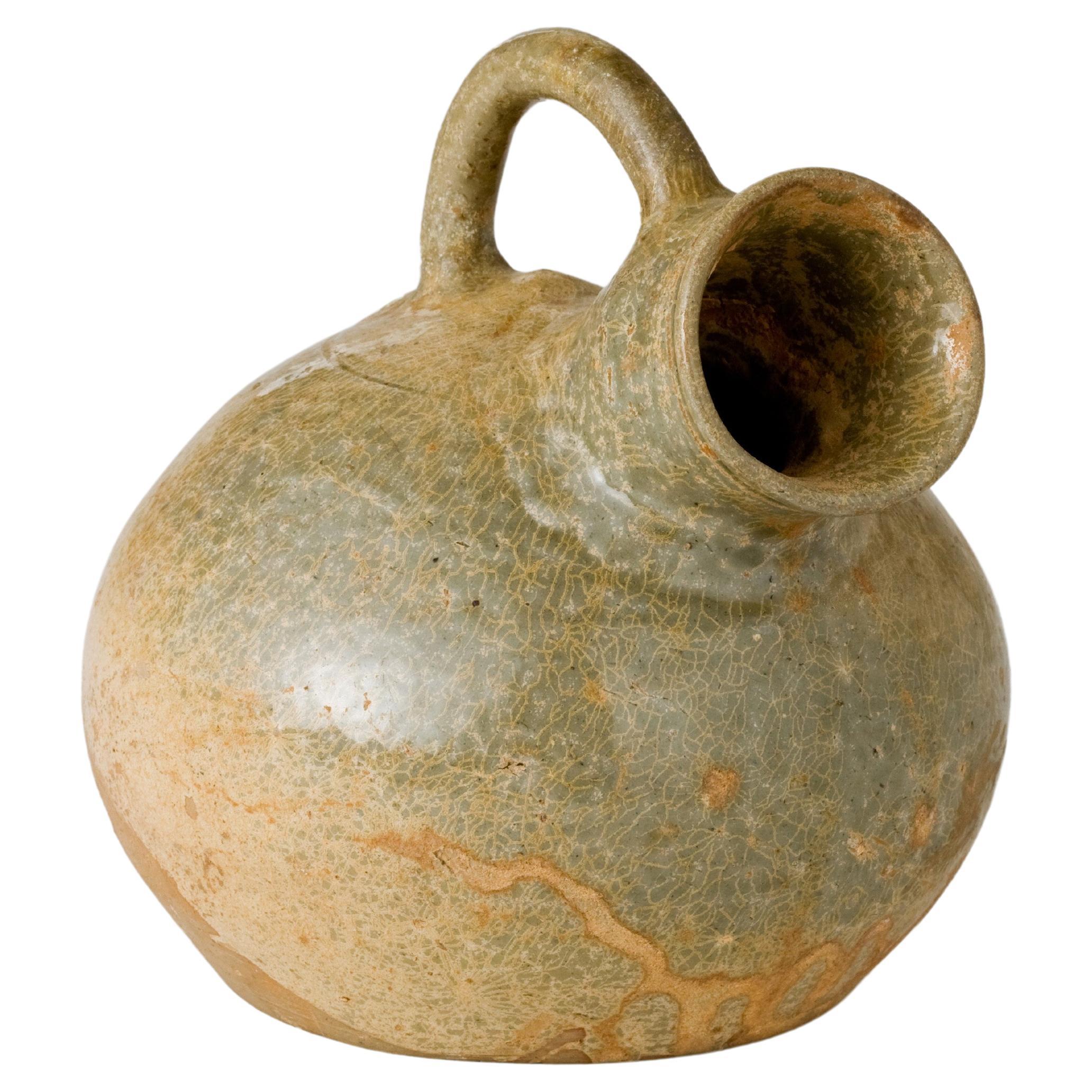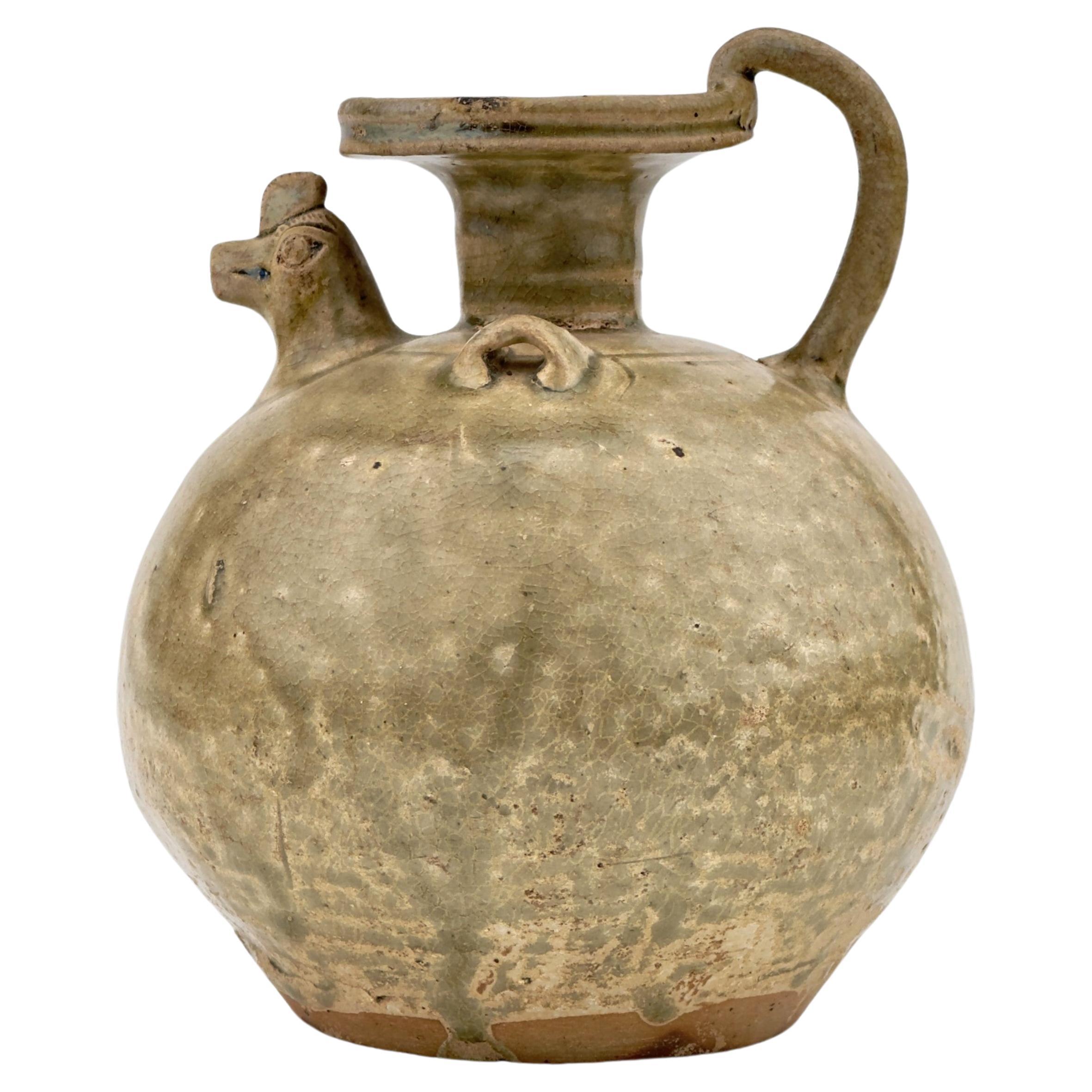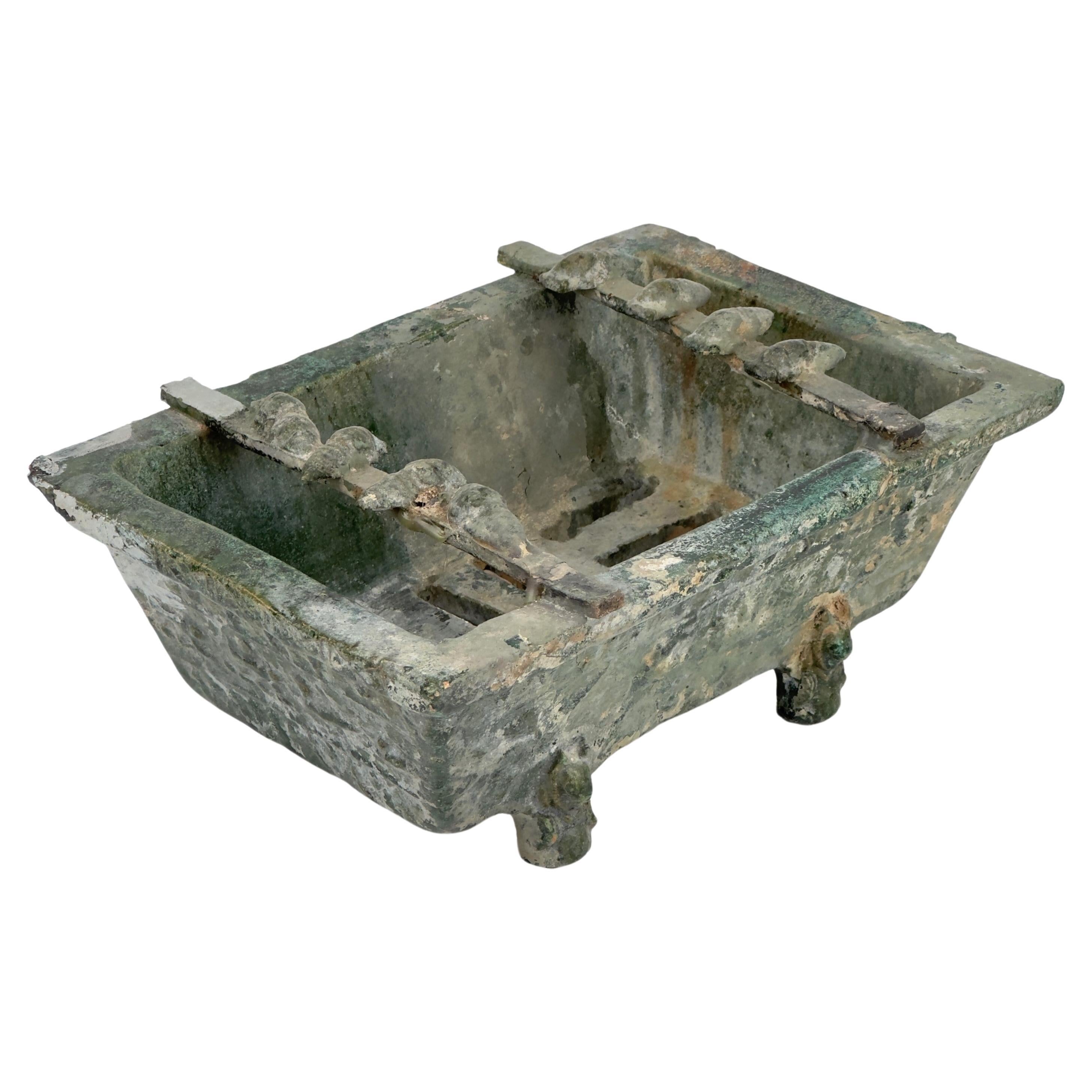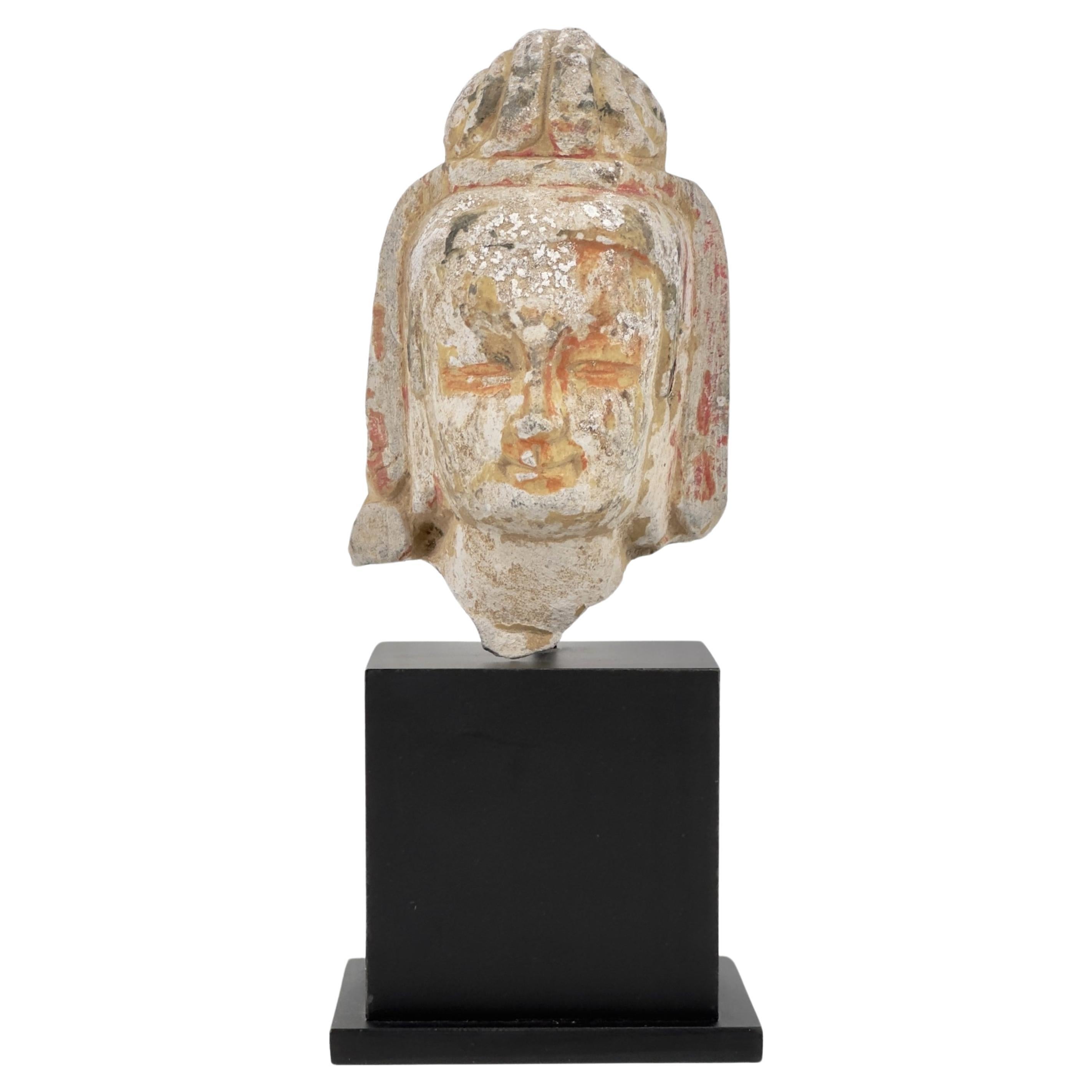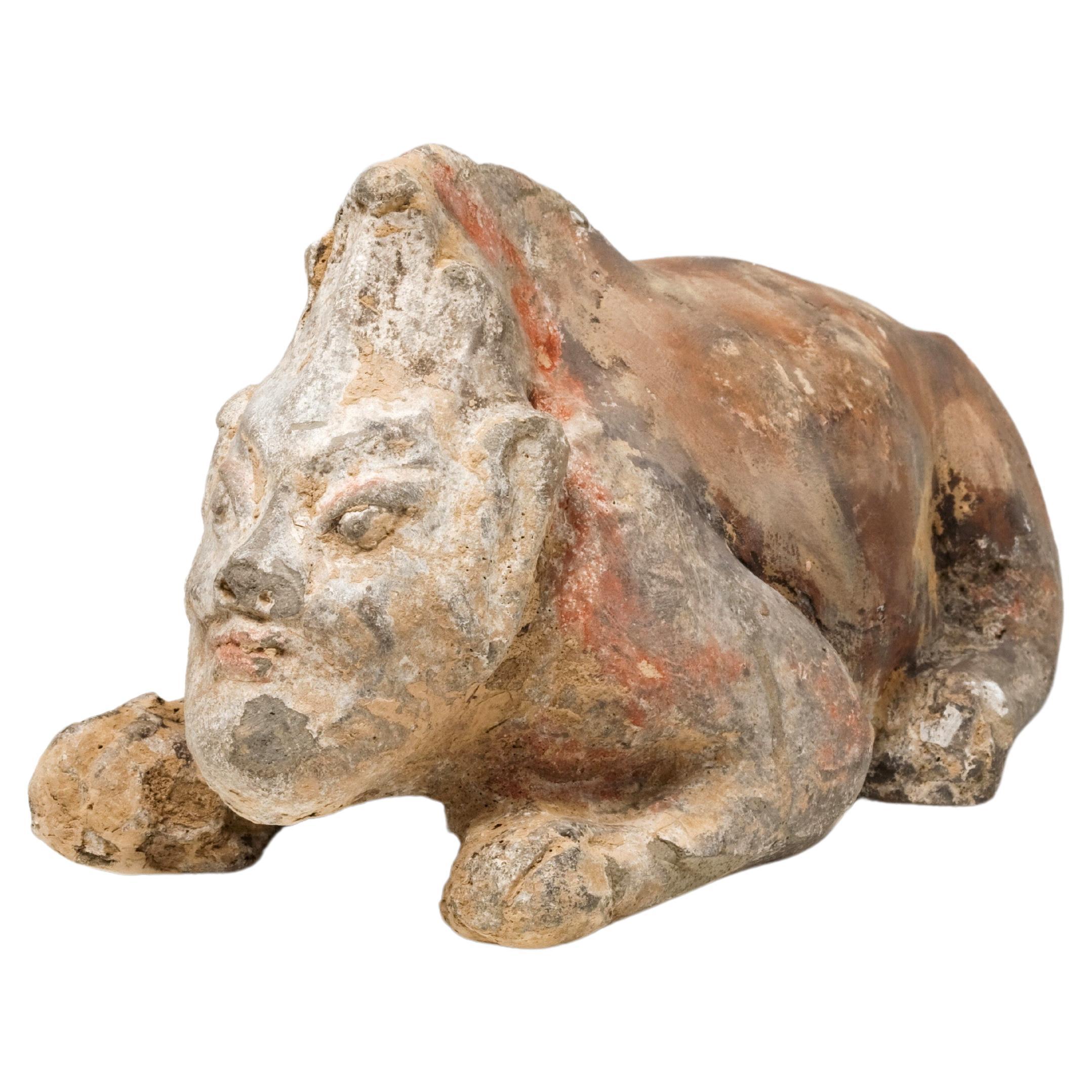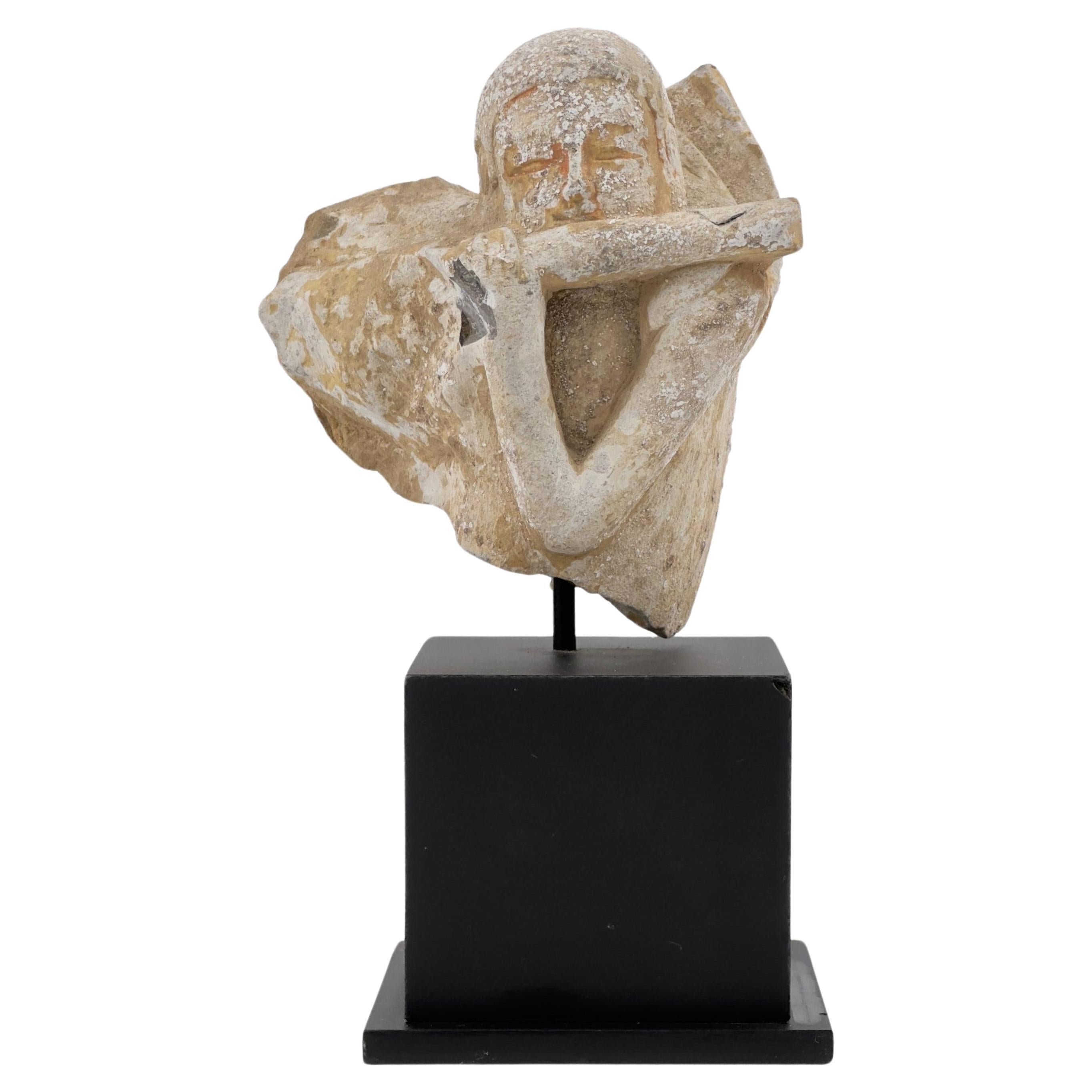Items Similar to Apsara Carved Limestone Stele with Extremely Rare 'Oolitic silica', Wei Dynasty
Want more images or videos?
Request additional images or videos from the seller
1 of 17
Apsara Carved Limestone Stele with Extremely Rare 'Oolitic silica', Wei Dynasty
About the Item
The small dots apparent on the surface of this stone stele are indicative of an oolitic silica structure or oolites formed in what is known as "Oolitic chert." This formation occurs gradually over the course of thousands to several hundred thousand years within the soil or sea. Similar structures are commonly found in ancient fossils or arrowheads. Ancient peoples chose certain types of stones for tool-making, preferring materials that were easier to work with and could be sharpened effectively. This predilection is believed to be the reason why oolitic silica structures are frequently found in ancient arrowheads.
The development of these oolitic silica structures is a very slow process involving the accumulation of siliceous layers around particulates. This phenomenon, where silica reacts with water to form layers around a nucleus, occurs under specific chemical and physical conditions. Typically, it takes thousands to hundreds of thousands of years for silica to gradually accumulate in layers through contact with moisture, a process that requires a precise harmony of many variables, including chemical conditions, temperature, pressure, pH, and biological activity.
It is known that no other stele with such a silica structure has been identified to date, serving not only as evidence of its authenticity but also significantly enhancing the rarity of this piece.
This stele appears to be a stone sculpture of an apsara, a celestial nymph from Buddhist and Hindu traditions. Despite its fragmentary state, the sculpture conveys grace and movement. The apsara is captured in a dynamic pose, perhaps once part of a larger tableau, playing a flute-like instrument.
The black stand was made in Hong Kong at the time of the acquisition.
Date : Northern Wei/Eastern Wei Dynasty(386~550)
Size : 22cm (Height) x 16cm(diameter)
Condition : Good (oolites dots on surface)
Provenance : Acquired in late 1990s from Hongkong
Reference :
1) Sotheby's New York 20 March 2018 - Jingyatang Treasures Of Chinese Buddhist Sculpture - Lot 202
(Price realised : 1,335,000 USD / Type : Related)
2) The MET - Accession Number: 19.16
3) Art Gallery NSW - Accession number 128.1988
4) Sotheby's New York 19 March 2007 - Fine Chinese Ceramics And Works Of Art, Including Property From The Collection Of The Albright-Knox Art Gallery, Buffalo, New York
(Price range : 30,000-40,000 USD / Type : Related)
* Northern Wei period Stone Statue
The Northern Wei period (386~534 CE) marks a significant era in Chinese history, particularly noted for its development of Buddhist art. The Northern Wei dynasty, established by the Tuoba clan of the Xianbei, a Turkic people, controlled Northern China and witnessed the widespread dissemination and flourishing of Buddhism within its territory.
Sculptures from the Northern Wei period predominantly depict Buddhist figures, including Buddhas, Bodhisattvas, and Arhats, reflecting the popularization of Buddhist faith. These stone sculptures were commonly found in temples, caves, and tombs, serving both religious and decorative purposes. The art of this era showcases a unique blend of Chinese stylistic elements with those of Indian and Central Asian Buddhist art, indicating the cultural and religious exchanges of the time.
Northern Wei sculptures are celebrated for their intricate craftsmanship and expressive detail. The rarity of Northern Wei sculptures lies in their historical significance as early examples of Buddhist art in China and their unique blend of Chinese and foreign artistic influences, making them invaluable for both cultural and academic studies. Their survival through centuries further adds to their scarcity and value.
* Apsara
Apsaras, celestial beings gracing the skies of ancient lore, are often heralds of good fortune and the embodiment of positive energy. They float through the heavens with such grace and beauty that their presence is said to uplift the spirit and inspire joy in the hearts of those who witness them.
In many Asian cultures, Apsaras are regarded as benevolent spirits of water and clouds, thought to bring nourishing rains to sustain life and fertility to the earth. Their dances, celestial melodies, and elegant movements are believed to soothe the soul and bring harmony to the world.
Depicted with ethereal elegance, Apsaras are not merely dancers; they are muses of creativity and the arts. Artists, musicians, and poets seek inspiration from these divine figures, hoping to capture a fragment of their heavenly artistry.
In the presence of Apsaras, it's said that one's luck is sure to turn for the better, as they are symbols of good fortune. Their likeness adorns temples and palaces, not only as decoration but as a wish for prosperity, success, and the positive flow of energy.
Embracing the qualities of Apsaras in one's life can be seen as an aspiration to live in harmony with the beauty of nature, the arts, and the joyful melodies of existence. They remind us of the delight found in the natural world and encourage us to appreciate the everyday dance of life with a light heart and hopeful spirit.
- Dimensions:Height: 8.67 in (22 cm)Diameter: 6.3 in (16 cm)
- Style:Han (Of the Period)
- Materials and Techniques:
- Place of Origin:
- Period:
- Date of Manufacture:386-550
- Condition:Wear consistent with age and use. Oolitic silica structure or oolites dots formed inside and on the surface of stone.
- Seller Location:seoul, KR
- Reference Number:1stDibs: LU9577239186122
About the Seller
New to 1stDibs
Joined in the past six months.
4.5
Vetted Seller
These experienced sellers undergo a comprehensive evaluation by our team of in-house experts.
Established in 1999
1stDibs seller since 2023
Typical response time: <1 hour
- ShippingRetrieving quote...Ships From: seoul, Korea South
- Return PolicyA return for this item may be initiated within 10 days of delivery.
Auctions on 1stDibs
Our timed auctions are an opportunity to bid on extraordinary design. We do not charge a Buyer's Premium and shipping is facilitated by 1stDibs and/or the seller. Plus, all auction purchases are covered by our comprehensive Buyer Protection. Learn More
More From This SellerView All
- Heavenly Beings Carved Limestone Stele Fragment, Northern/Eastern Wei DynastyLocated in seoul, KRFlying two heavenly beings depicted in the stone. They are celestial beings called an Apsara. While having the same fragment and shape, another work I uploaded exhibits small dots on...Category
Antique 15th Century and Earlier Chinese Han Antiquities
MaterialsLimestone
- Celestial being(Apsara) Stone Statue, Northern Wei-Tang DynastyLocated in seoul, KRThis statue appears to be a stone sculpture of an apsara, a celestial nymph from Buddhist and Hindu traditions. Despite its fragmentary state, the sculpture conveys grace and movement. The apsara is captured in a dynamic pose, perhaps once part of a larger tableau, playing a flute-like instrument. The facial features are serene yet expressive, with faint traces of pigmentation hinting at the sculpture's original polychromy. The black stand was made in Hong Kong at the time of the acquisition. Date : Northern Wei...Category
Antique 15th Century and Earlier Chinese Tang Antiquities
MaterialsStone, Limestone
- Guardian(Half human half beast) Pottery Figure, Northern Wei-Tang DynastyLocated in seoul, KRThis guardian figure represents a fusion of human and beast, a common motif symbolizing protection in Chinese lore. Crafted from pottery, the figure is a testament to the era's sculp...Category
Antique 15th Century and Earlier Chinese Han Antiquities
MaterialsPottery
- Stone Head of Bodhisattva, Northern Wei-Tang DynastiesLocated in seoul, KRThe face with downcast eyes and a smile, the hair swept up behind the pendulous ears into a high topknot. Faint traces of pigmentation hinting at the sculpture's original polychromy. The black stand was made in Hong Kong at the time of the acquisition. Date : Northern Wei-Tang Dynasty(5-8th century) Provenance : Acquired in late 1990s from Hongkong Reference : 1) Sotheby's London 13 May 2015 - The Soul Of Japanese Aesthetics – The Tsuneichi Inoue Collection - Lot 18 (Price realised : 17,500 GBP / Type : Closely related) 2) Sotheby's New York 26 September 2023 - CHINA / 5000 YEARS - Lot 1156 (Price realised : 8,890 USD / Type : Closely related) * Stone Head of Bodhisattva...Category
Antique 15th Century and Earlier Chinese Tang Antiquities
MaterialsLimestone
- Guardian Official Pottery Figure, Northern Wei-Tang DynastyLocated in seoul, KRThis figure appears to be a terracotta statuette, possibly representing a court official or a deity given the distinct headgear which could signify a rank or divine attribute. The style of the figurine, with its facial features and remnants of paint, suggests it could be a part of funerary art, which was common in Chinese culture during these periods. Date : Northern Wei...Category
Antique 15th Century and Earlier Chinese Tang Antiquities
MaterialsEarthenware, Pottery
- Rare Pottery Rectangular Brazier with cicadas in Green Glaze, Han DynastyLocated in seoul, KRThis pottery brazier, a burial artifact from the Han Dynasty, features quadrilateral sides that slope inward and a base with slits for ventilation. Each side is adorned with animal motifs and geometric patterns. The brazier stands...Category
Antique 15th Century and Earlier Chinese Han Antiquities
MaterialsPottery
You May Also Like
- Extremely Rare Late Shang Dynasty Inlaid Bronze Gu VesselLocated in Austin, TXOf classic trumpet form, with a round, splayed foot, narrow, waisted body and wide, flaring mouth. Two sets of large, well defined fanged and horned taotie masks cast in high relief...Category
Antique 15th Century and Earlier Chinese Archaistic Antiquities
MaterialsJade, Malachite, Bronze
- Chinese Northern Wei Dynasty Terracotta Horse - TL TestedLocated in London, GBAn elegant hollow-moulded terracotta horse. This horse is modelled in a standing pose with its neck elegantly arched and its ears pricked forward attentively. The mane is indicated with the use of a scalloped red design with white dotted details. The head is well modelled with notched ears pricked on either side of a feather ornament, with a tasselled rope looped around the top of the neck and tufted ornaments on the chest collar, the back is covered with a long red cloth with white dotted detailing, gathered at the bottom atop the flaring mudguard. The rump is encircled by a series of intricate tassels, attached to a tufted back piece. This terracotta may represent a horse fitted for a parade. Horses were an important status symbol in ancient China. These animals were brought to China via the Silk Road and were considered luxury goods. As such horses were a sign of wealth among the elite, and there were strict laws which restricted the ownership of horses to people of elevated rank. In fact, soldiers serving in China’s military...Category
Antique 15th Century and Earlier Antiquities
MaterialsTerracotta
- Chinese Pottery Camel, Northern Wei Dynasty (386 - 535 AD), China, TL TestedLocated in Austin, TXA delightful and rare Chinese painted high fired gray pottery model of a wooly camel, Northern Wei Dynasty (386 - 535 AD), China, with TL test. The charming camel is portrayed stand...Category
Antique 15th Century and Earlier Chinese Antiquities
MaterialsPottery
- Expressive Court Lady in Orange Terracotta - Wei Dynasty, China '386-557 AD'Located in San Pedro Garza Garcia, Nuevo LeonLovely sitting lady from the Imperial Court with original polychrome paint in orange terracotta. This piece is accompanied by a the following documents: - Certificate of Expertise by Jean-Yves Nathan - Specialist in Asian Arts for the - Certificate of Authenticity Mingqi in the Six Dynasties...Category
Antique 15th Century and Earlier Chinese Antiquities
MaterialsTerracotta
- China 100 BC Han Dynasty Ancient Rare Stickman Sculpture in Earthenware PotteryLocated in Miami, FLStanding Stickman from the Han Dynasty. Original ancient Chinese tomb attendants sculpture of a tall, thin standing man wearing a short tunic. Beautifully crafted in grey earthenw...Category
Antique 15th Century and Earlier Chinese Han Antiquities
MaterialsIron
- Han Dynasty, Rare Antique Chinese Pottery Amphora Decorated with Bronze OrnamentLocated in Sampantawong, THRare antique Chinese pottery amphora decorated with bronze ornament. In the past, this kind of vessel was used for wine container. Age: China, Han Dynasty, B.C. 206 - A.D. 220 Size...Category
Antique 15th Century and Earlier Chinese Antiquities
MaterialsPottery
Recently Viewed
View AllMore Ways To Browse
Asian Influence Furniture
Ancient Antiquities
Buddhist Art
Limestone Art
Prosperity Stone
Historical Antiquities
Used Stone Tools
Asian Dancer
Antique Carved Limestone
Limestone Water
Antique Buddhist Art
Carved Cloud
Chinese Limestone
Ancient Dynasty
Antique Marks And Symbols
Carved York Stone
Intricately Carved Asian Furniture
Asian Antique Gallery
